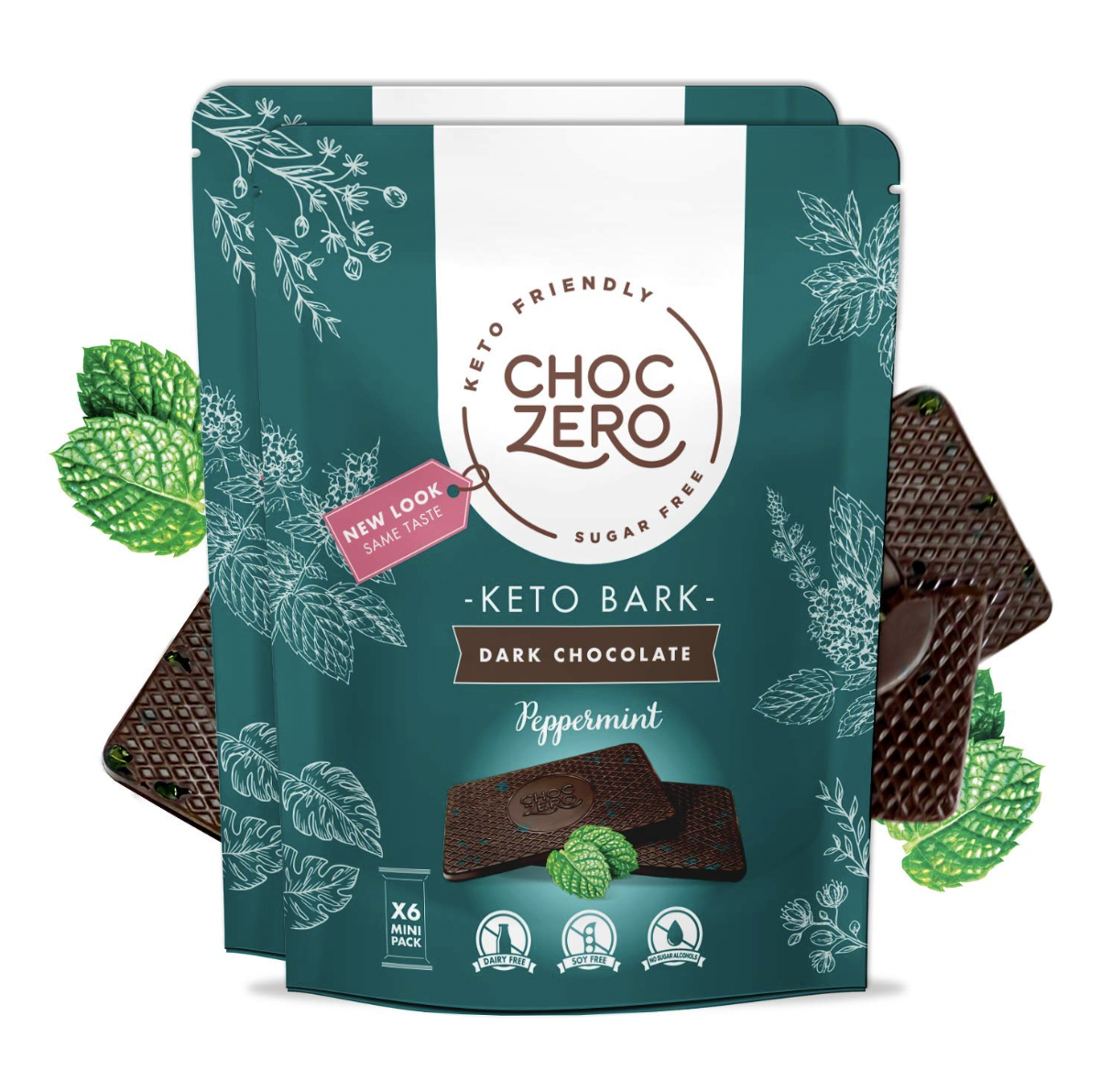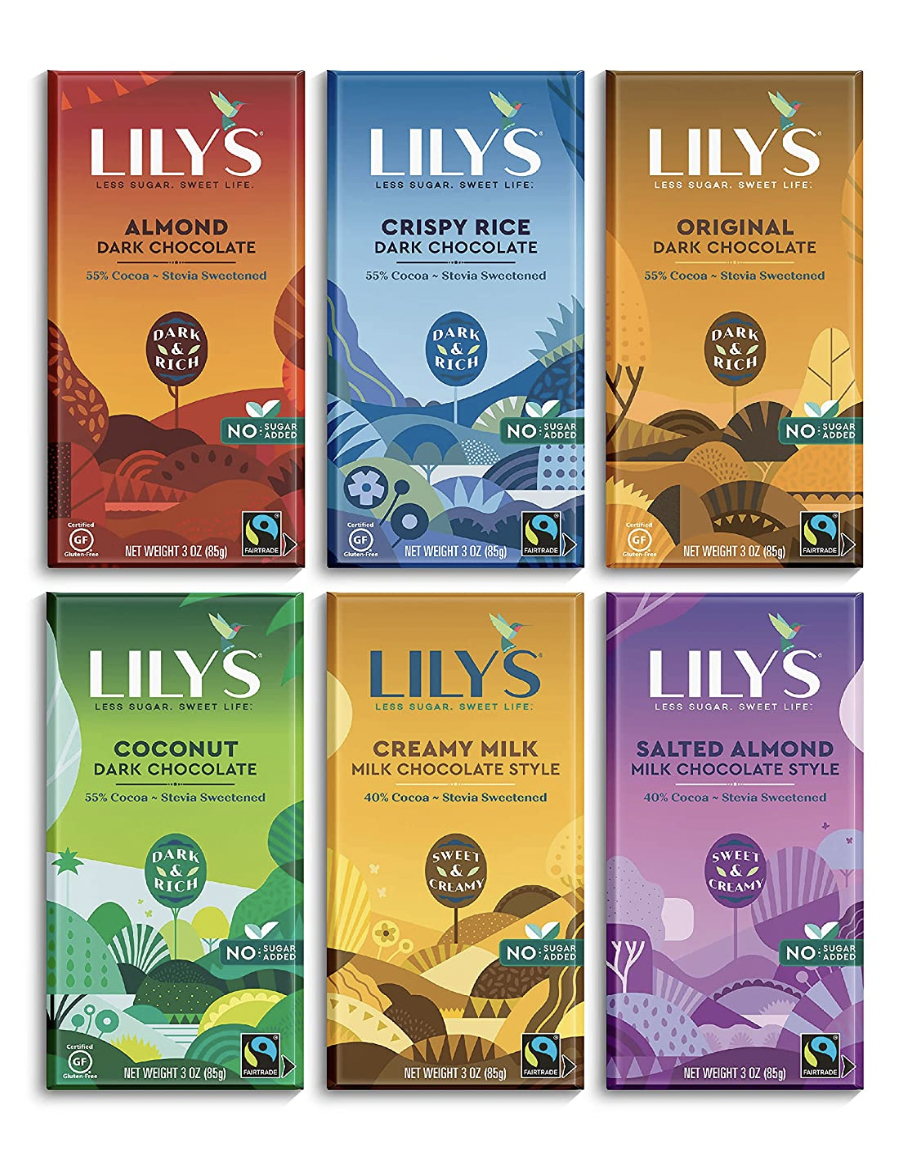Sugar gets a bad rap. But here’s the thing: a well-rounded approach to eating can happily include homemade cookies, real ice cream, chocolate, and your local coffee shop’s baked goods. After all, sugar—in moderation—encourages a healthy, normal relationship with food. Simultaneously, knowledge is power. Understanding what does (and doesn’t) improve your health is the key to longevity. When it comes to sleeping well, having stable energy, and balanced blood sugar, look no further than what’s on your plate. Nutritious food is powerful! On the other end of the spectrum? Added and artificial sugars. Today, we aren’t sugarcoating the truth. We’re dropping a few sugar bombs, including how it affects your health. But don’t worry—you can still satisfy your sweet tooth! We’re including the best low glycemic sugar alternatives. Vive la sweet life.
Feature image by Hannah Haston.

Surprising Sources of Hidden Sugar
The stats are in: American adults consume an average of 77 grams of sugar per day. That’s three times the recommended amount for women. This adds up to around 60 pounds of added sugar, annually. And unfortunately, the numbers are even more dire in children. Who’s to blame? The answer is a bit nuanced. Everything from CPG conglomerates to global food companies to advertising agencies. Not to mention, the government. The problem is, most of the sugar we’re consuming is hidden within processed foods. We don’t even realize we’re eating it! In fact, sugar goes by many different names—for the average consumer, it’s nearly impossible to figure out how much sugar is in packaged foods. This may surprise you, but sugar is in everything from salad dressings and pasta sauces, to ketchup, granola bars, yogurt, dried fruit, energy drinks, and tea.


What Are Added Sugars?
Let’s talk about the differences between natural, added, and artificial sugars. After all, not all sugar is created equal.
Natural Sugars
Natural sugars are the ones found in whole, unprocessed foods—such as the fructose in bananas or berries, or lactose in a glass of milk. Because most of these foods also contain fiber, we don’t experience the same sugar spike as we do after eating a doughnut or a sugar-packed soda.
Added Sugars
Added sugars, on the other hand, are simply that: they get added to a food—by you, a restaurant chef, or a food manufacturer. Added sugars include high fructose corn syrup, agave, honey, and more. Unfortunately, they don’t often come wrapped in other good-for-you ingredients, like protein and fiber. Thus, our bodies digest these sugars rapidly.
Artificial Sugars
Artificial sweeteners—also known as sugar alternatives or sugar alcohols—are food additives that provide a sweet taste (like that of sugar). They’re either zero-calorie or low-calorie sweeteners. However, they’re typically 200-600 times sweeter than sugar. They stimulate taste buds, affect hormones, slow metabolism, and more. In fact, animal studies have convincingly proven that artificial sweeteners cause weight gain, brain tumors, bladder cancer, and many other health hazards. Some kind of health-related side effects including carcinogenicity are also noted in humans. Not to mention, they’re totally addictive.


How Much Sugar Should You Eat in a Day?
Most of the time, your goal should be to limit added/artificial sugars. Simply put, they’re devoid of nutrients. Currently, these are the American Heart Association’s recommendations for daily sugar intake:
- Men should consume no more than 9 teaspoons (36 grams or 150 calories) of added sugar per day.
- For women, the number is lower: 6 teaspoons (25 grams or 100 calories) per day. For reference, one 12-ounce can of soda contains 8 teaspoons (32 grams) of added sugar!
Long-Term Effects of Eating Too Much Sugar
Routine sugar intake (from added sugars and artificial sweeteners) and chronic inflammation go hand-in-hand. Unlike low glycemic sugar alternatives, most of the sugar we eat lacks nutritional benefits. Plus, it causes pro-inflammatory cells to grow. And the more inflammation we have in the body, the higher our risk of obesity, metabolic issues, type 2 diabetes, estrogen dominance, and more. Plus, tooth decay! A sugar overload is a precursor to everything from headaches and bloating to poor sleep, feeling jittery or anxious, and irritability.


6 Types of Sugars to Limit (or Avoid!)
As you grab boxes of packaged foods, protein bars, trail mix, nut butters, yogurt, dried fruit, and sauces at the grocery store, get in the habit of reading food labels. Specifically, ingredient lists. Sugar is disguised with these kinds of names: corn syrup, fructose, dextrose, golden syrup, sucrose, maltose, beet sugar, molasses, turbinado sugar, and more.
1. White Sugar
White sugar, also known as table sugar or granulated sugar, is made from either sugar cane or sugar beets. It’s known as a refined sugar and is very processed. Don’t be fooled by organic white sugar, as it’s no more redeeming! White sugar causes insulin spikes and is responsible for a wide array of health problems—including obesity, leaky gut, and excess belly fat.
2. Cane Sugar
Cane sugar is like granulated sugar, but it’s exclusively made of sugarcane. It’s much less processed than white sugar. Cane sugar (including raw cane sugar) is used to sweeten everything from desserts to hot drinks. Although raw cane sugar is often marketed as a healthy alternative to regular sugar, there’s no real difference between them. In fact, both are identical in terms of chemical composition and made up of sucrose (formed by simple sugars). As with regular sugar, consuming high amounts of raw cane sugar can contribute to weight gain and may promote the development of unwanted health conditions.


3. High Fructose Corn Syrup
High-fructose corn syrup, also known as HFCS, is a sweetener made from corn starch. Many experts believe that added sugar and HFCS are key factors in today’s obesity epidemic. In essence, HFCS (and table sugar) contain fructose and glucose. Your body metabolizes fructose differently than glucose, and consuming too much fructose can lead to health problems. It increases your risk of fatty liver disease, an excessive intake is linked to diabetes, and it contains no essential nutrients.
4. Artificial Sweeteners
A few examples are aspartame (NutraSweet, Equal, etc.), sucralose, maltitol, maltodextrin, and saccharin (Sweet-n-Low). All of these can increase blood glucose levels, cause indigestion and weight gain, spark allergies, decrease beneficial bacteria in the gut, and more. Ultimately, they provide no nutritional value.
5. Sugar Alcohols
Sorbitol is a naturally-occurring sugar alcohol. Sorbitol is known for its smooth mouthfeel, sweet flavor, and mild aftertaste. And while it’s generally considered safe, it acts as a laxative by stimulating the movement of your digestive tract. Consuming high amounts of sorbitol—and sugar alcohols, in general—can cause digestive issues like bloating, gas, stomach pain, cramps, and diarrhea, and more.
6. Agave
While agave nectar may seem like a healthier option than cane sugar, consider this: Because agave syrup is much higher in fructose than plain sugar, it has greater potential to cause adverse health effects, such as increased belly fat and fatty liver disease. Your body is well equipped to handle the small amounts of fructose found in fruit, but agave nectar is a different story. In essence, agave nectar isn’t a healthful alternative to table sugar. As it turns out, agave has a higher fructose content than any other common sweetener (more than HFCS!). Because of its reputation as a “natural” sweetener, it is now widely used in products claiming to be good for health.
Are Honey and Maple Syrup Healthy?
Armed with an understanding of sugary culprits, there are a variety of healthy swaps. But first, let’s dive into the glycemic index. The glycemic index—also known as the GI— is a concept used to compare how different carbohydrate-containing foods raise our blood sugar. The higher the GI, the higher the likelihood it will raise blood sugar levels. Which is not the goal. When it comes to refined sugar, corn syrup has the highest GI. White sugar has a slightly lower GI. Below those: honey and maple syrup. Yes, raw honey and pure maple syrup (like all carbohydrates) can raise blood sugar quickly, but not quite as fast as table sugar. Moderation is key.
What Are Low Glycemic Sugar Alternatives?
Now, onto low glycemic sugar alternatives!
Stevia
Stevia is a plant extract, not an artificial sweetener. It’s zero-calorie, but it has a delicious sweet taste. Research shows it has little (if no) effect on insulin levels. Stevia has a glycemic index and a glycemic load of zero. You can add liquid stevia to coffee, for example, or stevia powder for baked goods. Here are great tips for cooking and baking with stevia.
Monk Fruit
The natural sweetness from monk fruit comes from mogrosides—not fructose or sucrose. Lakanto claims that it is the healthiest alternative to sugar. I love using this golden monk fruit in cookies and muffins!


Oligosaccharides
Oligosaccharides are sweet, non-digestible carbohydrates. They’re sourced from select fruits and starchy root vegetables. Basically, they’re prebiotic fibers. Not only are they tasty, but they can help stimulate beneficial bacteria in your gut! Try them in this baker’s bundle.
Erythritol
Erythritol occurs naturally in many fruits and vegetables—like melons, grapes, and asparagus. It’s classified by the FDA as good for oral health, too! It has zero calories and doesn’t affect blood glucose.
Xylitol
Although it’s a sugar alcohol, xylitol is naturally present in small amounts in various fruits and vegetables. This sweet crystalline substance is slowly absorbed from the digestive tract and does not cause rapid rises in blood glucose. In addition, it also has unique and clinically-proven dental benefits. If you’re a gum chewer, switch to this.


Best Low Glycemic Chocolate Bars
Good news: you can have your chocolate and eat it, too! These chocolate bars are diabetic-friendly, and some are paleo and keto. You’d never know these chocolate bars contain low glycemic sugar alternatives.
Your daily, guilt-free indulgence. These bites are the perfect post-lunch nibble. Made with plant-based protein, they’re low-sugar, low-carb, vegan, paleo, and keto-friendly! The variety pack is where it’s at.
ChocZero’s Dark Chocolate Peppermint Christmas Keto Bark
Calling all chocolate peppermint lovers, ChocZero’s keto bark is IT. Sugar-free, low-carb, and made without sugar alcohols, this ChocZero is changing the keto chocolate game. Soy, grain, and gluten-free, they source fair-trade, ethical, and non-GMO cocoa beans.
ChocZero’s Dark Chocolate Peppermint Christmas Keto Bark, $14.99
Rather have plain chocolate? ChocZero also makes chocolate squares, sourced from fair-trade premium cocoa beans. These squares are sweetened with their exclusive monk fruit and fiber blend, rather than artificial sweeteners. They’re also very low-carb—only 1g net carbs per serving! Perfect for a keto lifestyle and other low-carb diets.
Hu Organic Dark Chocolate Bars
Hu—Back to Human—chocolate is next-level. Made with organic 70 percent cocoa, unrefined organic coconut sugar, and organic fair-trade cocoa butter, their chocolate bars have an unmatched ingredient simplicity. Hu chocolate is free from dairy, palm oil, emulsifiers, soy, gluten, sugar alcohols, and more. Plus, you won’t find any artificial ingredients or stabilizers in their ridiculously delicious chocolate.
Lily’s Chocolate Variety 6-Pack
This is the ultimate chocolate lover’s variety pack. It includes one each of Lily’s premium chocolate bars: Original, Almond, Coconut, Crispy Rice, Creamy Milk, and Salted Almond & Milk (40-55% Cocoa). Their chocolate is made with stevia, giving these bars a natural richness and less sugar than typical chocolates. They use fair-trade, gluten-free, and non-GMO ingredients.












